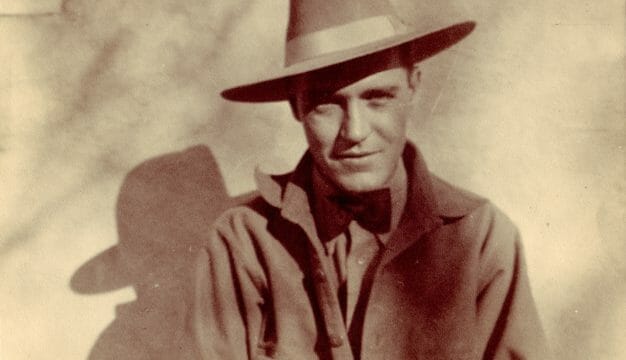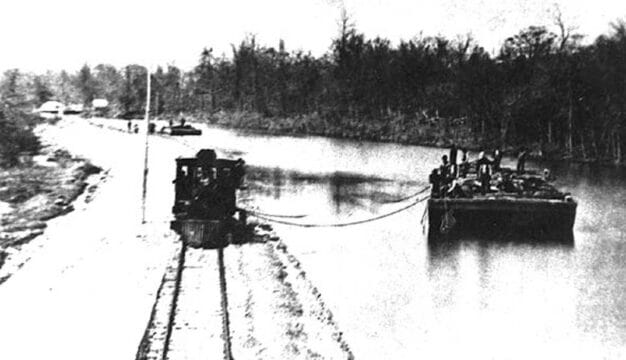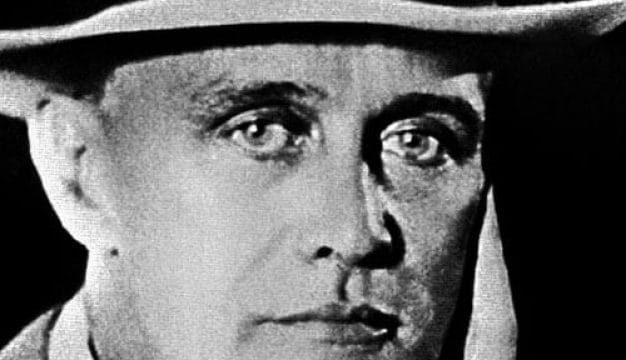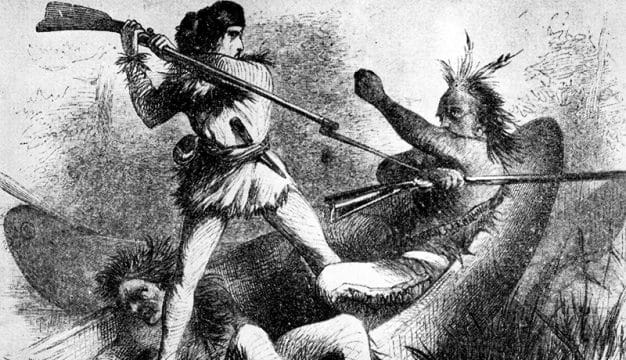First Baptist Church of Selma
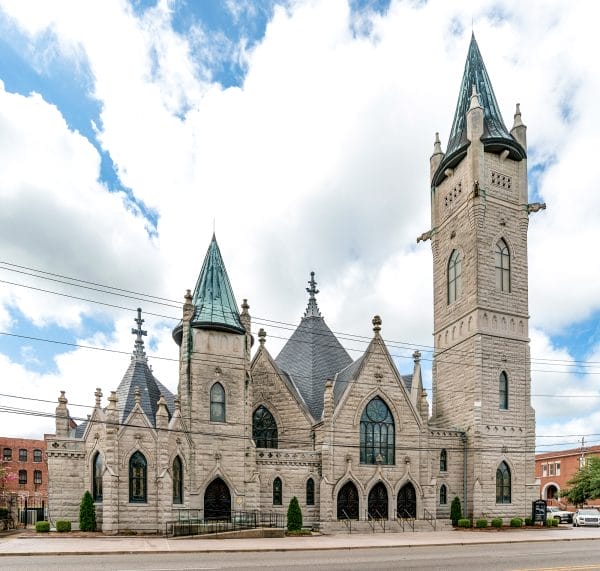 First Baptist Church of Selma
First Baptist Church of Selma, in Selma, Dallas County, was originally founded in 1842 by members of Ocmulgee Baptist Church from nearby Perry County. The nascent church moved into a permanent building in 1850 and, as the congregation grew, it began construction on a new building that was finished in 1904. It was designed in the Victorian High Gothic architectural style that was popular in the late nineteenth and early twentieth centuries and has since undergone extensive renovations over the past century while retaining its original design. It is noted for its stained-glass windows, including one designed by Dallas County native Clara Weaver Parrish, who worked with famed artist Louise Comfort Tiffany. The church has helped to establish nine other churches in the surrounding areas and is also a contributing property to Selma’s Old Town Historic District, which is listed on the National Register of Historic Places.
First Baptist Church of Selma
First Baptist Church of Selma, in Selma, Dallas County, was originally founded in 1842 by members of Ocmulgee Baptist Church from nearby Perry County. The nascent church moved into a permanent building in 1850 and, as the congregation grew, it began construction on a new building that was finished in 1904. It was designed in the Victorian High Gothic architectural style that was popular in the late nineteenth and early twentieth centuries and has since undergone extensive renovations over the past century while retaining its original design. It is noted for its stained-glass windows, including one designed by Dallas County native Clara Weaver Parrish, who worked with famed artist Louise Comfort Tiffany. The church has helped to establish nine other churches in the surrounding areas and is also a contributing property to Selma’s Old Town Historic District, which is listed on the National Register of Historic Places.
In 1842, members of Ocmulgee Baptist Church, the second oldest Baptist church in Perry County, placed an ad in a local Selma newspaper to gauge interest in establishing a new church in the area. After a favorable response, First Baptist Church was officially founded on May 29, 1842, and the church’s first pastor was the Rev. Solon Lindsey, a faculty member from nearby Howard College (present-day Samford University). After using a temporary space, the congregation of First Baptist moved into a permanent building on the corner of Church Street and Alabama Avenue on June 15, 1850.
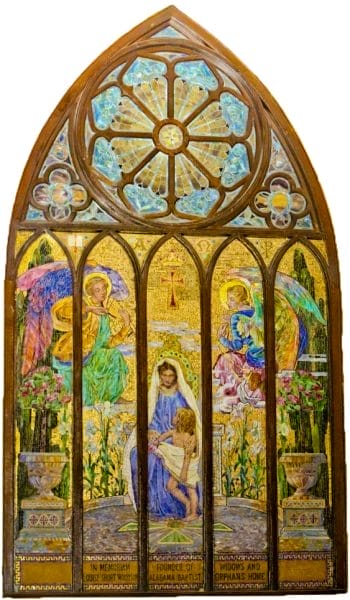 Clara Weaver Parrish Mosaic
At the outbreak of the American Civil War in April 1861, First Baptist Church was under the leadership of Noble Leslie DeVotie, a 21-year-old graduate of the University of Alabama and Princeton Theological Seminary. The youngest pastor ever to serve the church, Noble was the son of distinguished Howard College faculty member James H. DeVotie, who worked alongside Solon Lindsey. In 1861, after serving First Baptist for two years, Noble DeVotie enlisted as a chaplain to accompany troops from Selma marching off to serve in the Confederate Army. As he was about to board a steamer at Fort Morgan, Baldwin County, he stumbled and drowned in Mobile Bay, making him the first casualty of the war from the state of Alabama.
Clara Weaver Parrish Mosaic
At the outbreak of the American Civil War in April 1861, First Baptist Church was under the leadership of Noble Leslie DeVotie, a 21-year-old graduate of the University of Alabama and Princeton Theological Seminary. The youngest pastor ever to serve the church, Noble was the son of distinguished Howard College faculty member James H. DeVotie, who worked alongside Solon Lindsey. In 1861, after serving First Baptist for two years, Noble DeVotie enlisted as a chaplain to accompany troops from Selma marching off to serve in the Confederate Army. As he was about to board a steamer at Fort Morgan, Baldwin County, he stumbled and drowned in Mobile Bay, making him the first casualty of the war from the state of Alabama.
For the rest of the war, First Baptist Church kept its door open, and after the Battle of Selma in April 1865, it was the only church in the area still open for Sunday services. During the period of the city’s occupation by federal forces, U.S. Army officers attended services at the church. In 1866, African American Baptist deacon Alex Goldsby, freedman Daniel Alexander, African Methodist Episcopal Zion minister James Wadsworth, and 14 other freedmen asked for and received permission from Mayor Madison J. Williams to open Selma’s first school for African American youth in the church basement. The school’s teacher was Civil War veteran and Yale University graduate Joseph Sears from Rhode Island.
By the late 1890s, First Baptist Church outgrew its original building and in 1900 it purchased a lot on the corner of Dallas and Lauderdale Streets to begin construction on a new permanent building. Prompted by difficulties with the construction process, Building Committee chairman Ernest Lamar decided to oversee the work himself, and the first sermon in the new sanctuary was preached by former pastor Alfred J. Dickerson in September 1904. The church was officially dedicated in 1909.
Over time, the building that has housed the congregation of First Baptist has been expanded and renovated numerous times. In 1917, the “Mallory Room” was added to the worship auditorium as an additional Sunday school space but was later refitted as additional seating for the worship congregation. (The room was named for Kathleen Mallory, an executive director of the Woman’s Missionary Union for 35 years and member of First Baptist.) On August 5, 1923, construction on the first Sunday school building (now known as the Old Education Building) was begun and completed in the late spring of 1924. In June 1957, the church purchased property on Lauderdale Street between Dallas and Parkman Avenues for the construction of a new education building that opened on January 12, 1964. In May 2005, the Old Educational Building was renovated and rebuilt; it was dedicated in May 2011 as the “DeVotie Education Building” in honor of former pastor Noble DeVotie. Other renovations occurred during that decade as well, including the restoration of the original heart-pine floors and the addition of a custom-designed chandelier and sconces.
First Baptist Church’s design represents High Victorian Gothic architecture, which was popular from the late nineteenth century to the turn of the twentieth century and which utilizes multicolored decorations, Gothic details, and varying textures. The church features many stained-glass windows, including Clara Weaver Parrish’s window and mosaic. The edifice was constructed with large rough-cut stones and includes a four-story tower topped with a conical roof with gargoyles and tracery. Additionally, a woodworker named McKibbon hand made the church’s interior wooden panels and pulpit furniture, all of which reflected the building’s exterior emphasis on High Victorian Gothic design.
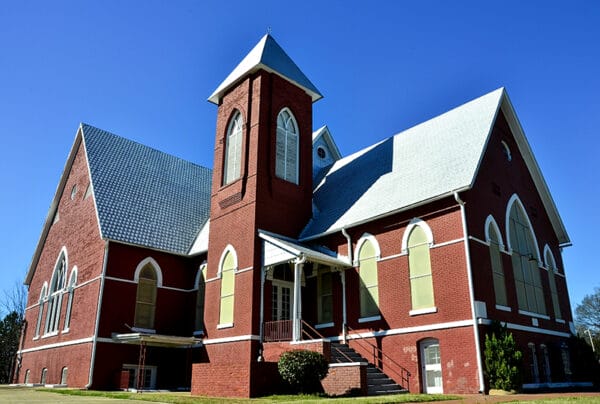 First Baptist Church
Over the years, First Baptist Church personnel have helped to plan and establish numerous sister churches throughout Alabama. These churches include First Baptist Church (originally the First Colored Baptist Church) now on MLK1842 Jr. Street (1894), Central Baptist (now Valley Grande) (1896), West End Baptist (1943), Northside Baptist (1944), Water Avenue Baptist (1945), Selmont Baptist (1946), Elkdale Baptist (1952), Fairview Baptist (1956), and Summerfield Baptist (1973). First Baptist is a contributing property to Selma’s Old Town Historic District, which was added to the National Register of Historic Places on May 3, 1978.
First Baptist Church
Over the years, First Baptist Church personnel have helped to plan and establish numerous sister churches throughout Alabama. These churches include First Baptist Church (originally the First Colored Baptist Church) now on MLK1842 Jr. Street (1894), Central Baptist (now Valley Grande) (1896), West End Baptist (1943), Northside Baptist (1944), Water Avenue Baptist (1945), Selmont Baptist (1946), Elkdale Baptist (1952), Fairview Baptist (1956), and Summerfield Baptist (1973). First Baptist is a contributing property to Selma’s Old Town Historic District, which was added to the National Register of Historic Places on May 3, 1978.
First Baptist Church of Selma is located at 325 Lauderdale Street. The school founded in the First Baptist basement would eventually evolve into the First Colored Baptist Church, founded in 1894; it is now called First Baptist Church. It became an important symbol during the civil rights movement, hosting the Dallas County Voters League and the Student Nonviolent Coordinating Committee. It is one block north of Brown Chapel AME Church, which was the starting point of the Selma to Montgomery March in March 1965 and is part of the National Historic Trail that commemorates the event. There are numerous additional historic markers and sites in Selma related to the city’s antebellum, Civil War, and civil rights history.
